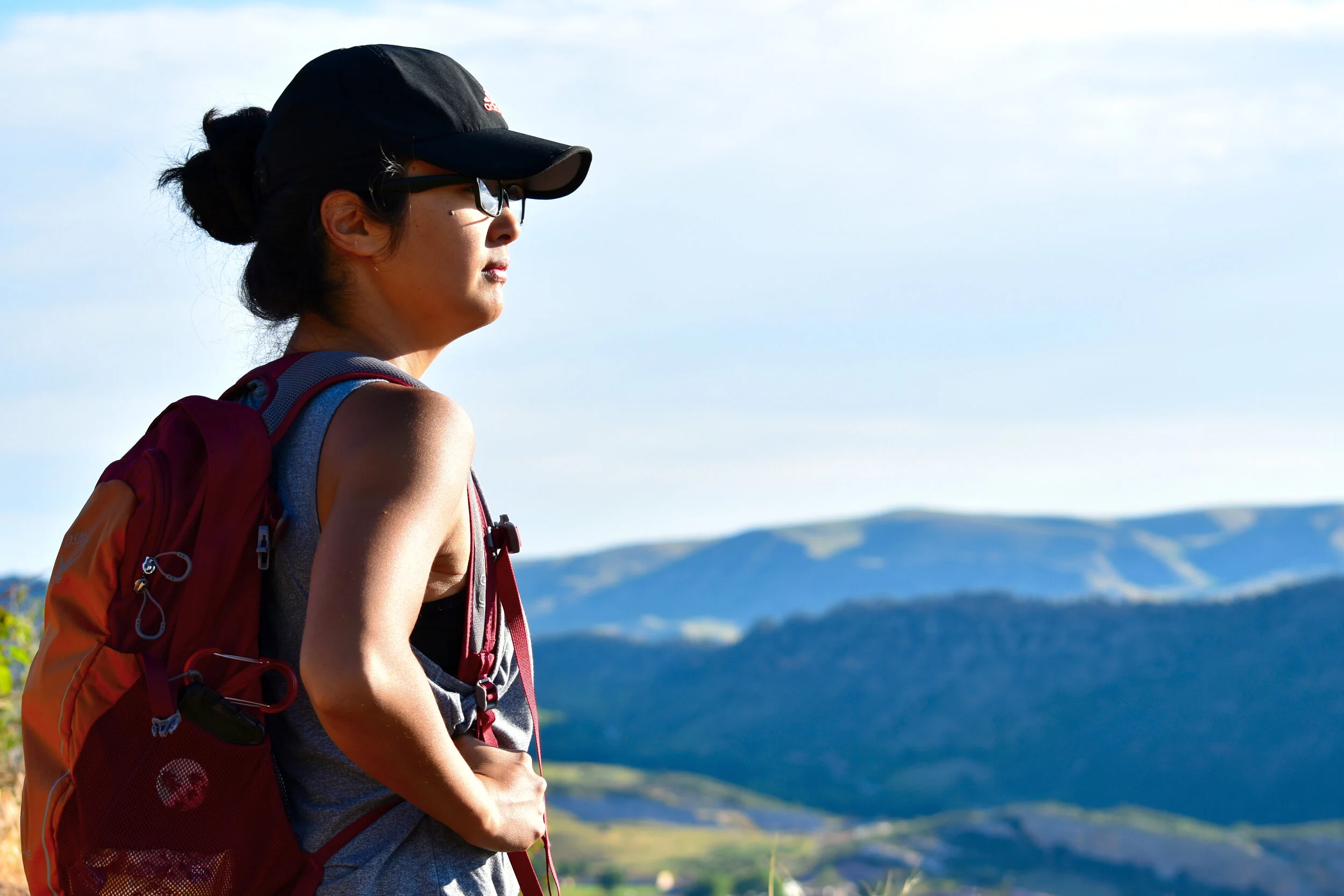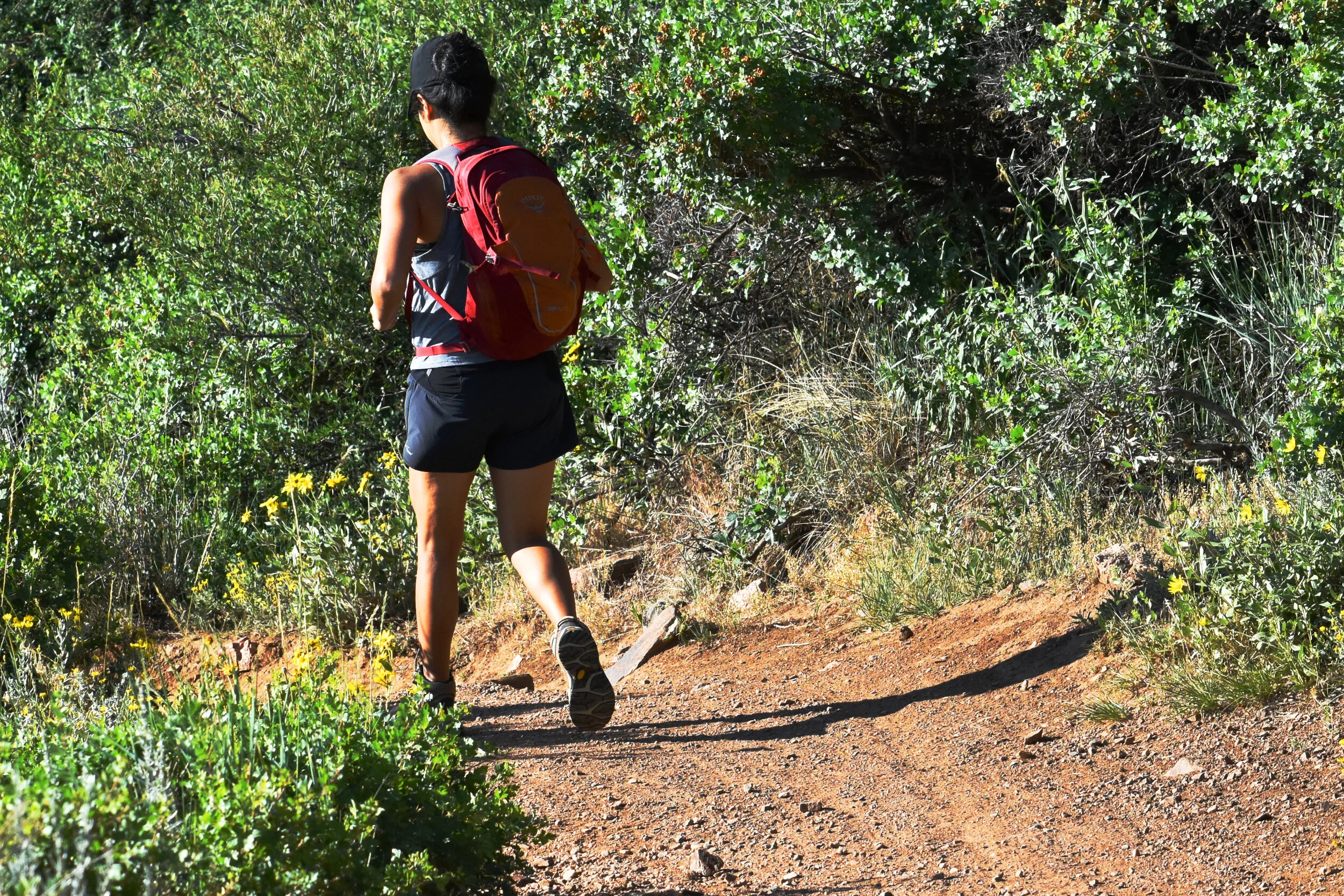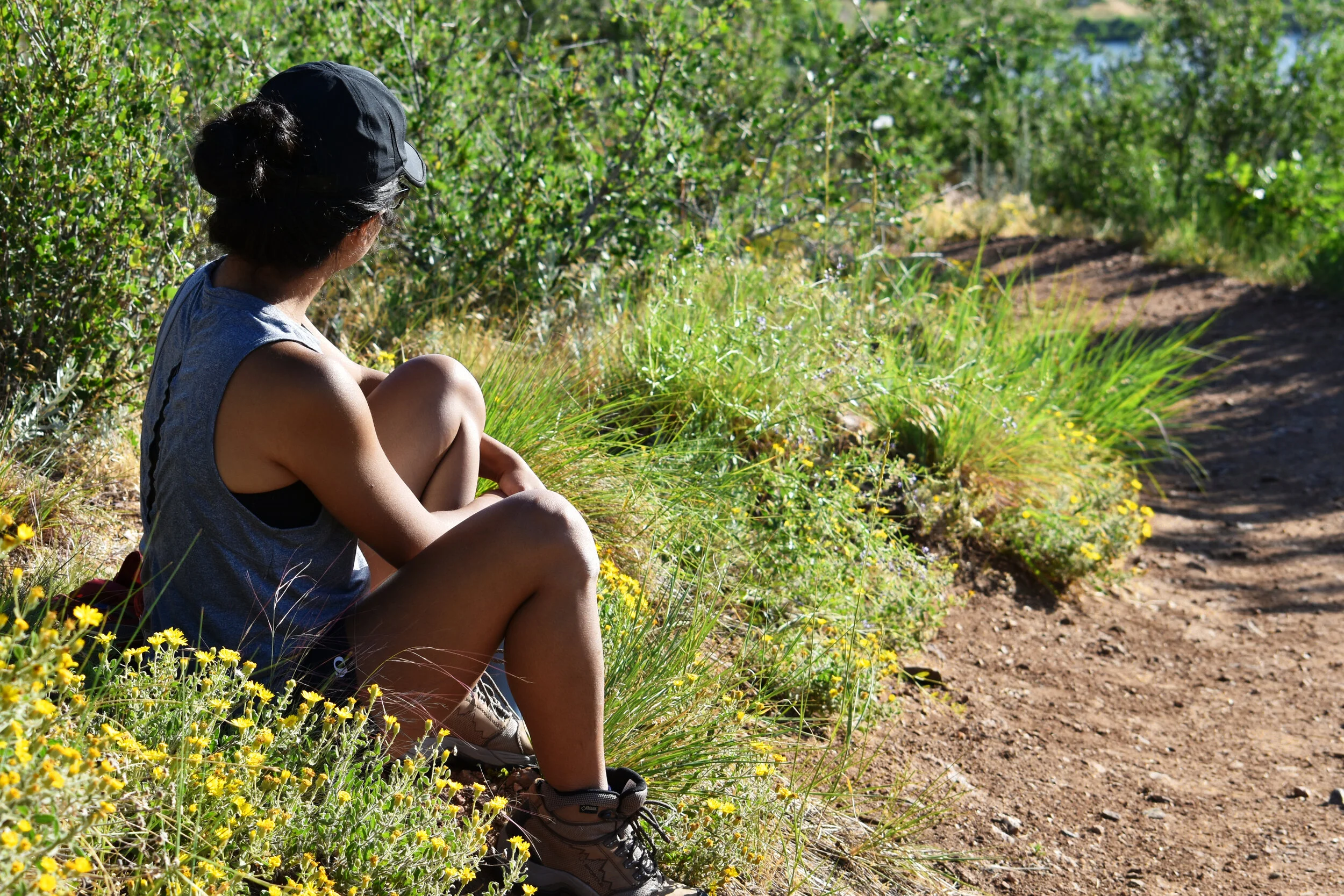Family Tradition - An Interview
A dedicated hiker and runner, and what she’s learned from years of exploring.
In almost any case, the family unit plays an integral role in the life and growth of an adventurer. Whether it was family trips that first ignited the spark to explore, or a sibling’s constant curiosity that fuels your own. In my case, my sister Andrea and I have been unintentionally challenging each other to see what’s over the next hill.
We both grew up on the Great Plains region of northeastern Colorado. While it is a beautiful landscape of gentle hills, prairie grasses, and mule deer, our neck of the woods is decidedly flat and dominated by farmland. When Andrea moved to Greeley in 2008 for college, the mountains beckoned, and she’s never left. Quick day hikes, lengthy backpacking adventures deep into the brush, trail running local spots, marathon training, and venturing across the nation to other locations, Andrea’s love of the outdoors has made her a Swiss Army Knife of exploration.
Andrea looks to the southeast from Mount Falcon Castle Trail, a pleasant moderate difficulty hike just outside of Morrison, CO. A Colorado girl, rocky and steep trails are some of her favorites.
Give a quick intro for the readers who don’t know you.
“I’ve been hiking for years, and I find a lot of my energy and life comes from being surrounded by nature. I think there’s something super life-giving about losing your breath and having your quads burning as you’re climbing up a mountain or scrambling up a peak. When you think of trails, I think it’s a really good comparison to the journey of life itself.”
How did you get into hiking and trail running?
“Growing up, our parents were always taking us up to the mountains for camping trips and we’d usually end up hiking. I think my interest always stemmed from that.”
The preferred place for my family to vacation in-state would be Estes Park and Rocky Mountain National Park. Back in the late 1990s and early 2000s, Estes had still retained a small mountain town atmosphere and the park wasn’t as crowded and congested as it is nowadays. This made for camping trips that were much more in tune with nature and far better for solitude.
“College was when I really started seriously hiking. I started with some simple hikes, you know, 10,000 feet, and built up to 12-ers. I’ve always been an avid runner as well, so trail running just kind of happened naturally.”
What makes hiking so desirable to you?
“The adrenaline. Most people would not think that adrenaline is involved in hiking, but there is. When you’re scaling up at the top of a peak or you’re running up a really intense incline then your blood is pumping and your heart is pounding. Your breathing rate is up and you’re sucking in air much quicker and it’s just natural that your adrenaline spikes. But there’s also a serenity to being in the woods. When you slow down after the summit or take a break midway up it’s so peaceful and you can just hear the entire forest breathe.”
Competing in high school track & field events was just the beginning. Andrea has trail-run all over Colorado and has ran the Bolder Boulder twice. She says that trail-running is a skill that eventually is required of all hikers, especially when descending more difficult trails.
Is hiking an expensive hobby in your opinion?
“No, not at all. Anybody that’s got a pair of tennis shoes and some workout clothes can do it. But the more and more you get into it, you’re going to have to get the appropriate shoes, appropriate packs, etc. Because eventually you’re going to want to be comfortable and take hikes that are more intense. The elevation is going to be greater, the climb itself is just exhausting, and the weather is going to change; sometimes dramatically.”
How do you find good locations?
“A lot of it is by word of mouth. You have friends or other communities and people you know that hike and trail run and it’s the same kind of thing like hearing about a TV show from social media. So if you’re part of that kind of social community then you kind of end up hearing about it. Also it comes down to my own research. If I have a specific type of trail that I have in mind to hike, I’ll go ahead and search a location or a certain terrain. If I really want to hike a 14-er then I’ll research one that I haven’t done before.”
What gear is essential, and what gear can you skimp on?
“Shoes are essential. People think that you can skimp on shoes or you can go the cheap route. But if you think about it, this is your mode of transportation up a peak that’s going to be 14,000 feet above sea level. Would you take a truck rock crawling with the cheapest tires you can find? The answer is no, and it’s the same with footwear. It’s extremely important that you find something that fits that you can jump over rocks or ford a small stream or run a quick pace in. Because if you let it slide and you go with a pair that’s just kind of okay, then you’re going to end up probably having a very miserable hike.”
Depending on the type of terrain or activity you plan on doing, you might need a different type of shoe. If you’re walking across an area with a lot of tall grasses, cacti, or sawgrass, you might want to forget the lightweight and breathable hiking shoes in favor of a square-toe cowboy boot with a hiking tread. If you’re going to be near water where things can get slippery, you’re going to need a more aggressive tread. Oftentimes a western apparel store can yield just as many options as an outdoors store. My personal boot arsenal consists of some ankle-height Keen hiking boots with a steel toe and waterproofing; a waterproof pair of Ariat cowboy boots with a composite toe, steel shank, and rugged terrain tread; and an inexpensive pair of knee-high off-brand waders. I have no major complaints with any of my boots.
“Don’t ever go for the most expensive either, but you need to be okay spending more than $30 on your hiking boots. You can find them on clearance, but you really just have to be open and willing to spend a chunk of money. Hiking shoes are usually not ‘cheap.’ Find something that fits you exactly the way it should, and just be okay with spending the money for something good.”
A large part of exploring is knowing your limits and knowing when to take a rest. Most trails offer several places to pull off and catch your breath and grab some water while staying out of the way of bikers and runners.
What advice would you give an avid hiker who wants to get into trail running?
“If you’re a hiker who’s never trail ran, then I don’t think you’ve ever really hiked.” Andrea jokes with a smile.
“But seriously, most people who hike a lot are aware of some of the basics of trail running. When you’re going down a mountain, you’re going to end up turkey trotting for the sake of your knees. But I would say that if you want to get into trail running, it’s amazing and absolutely worth the exercise. It’s worth overcoming whatever possible hesitations you might have. But you need to be in shape for it. Not anybody can just go trail run any particular trail. What you’re going to do is start trail running and end up walking most of it. Within hiking you don’t always have to keep your eyes on the trail, you can look at the scenery and take in what you’re passing by. But with trail running you have to constantly be aware what’s on the trail. That’s the exciting thing about it. You’re in this beautiful area, and you’re also whizzing through it. But it’s much different than hiking. It’s much much different. You have to be very prepared; your feet are moving differently and you’re maneuvering differently, too. My advice would be to start with a soft trail, an easy one with some elevation change and rocks, just to make sure you have the agility to handle it.”
Final comments on getting outdoors?
“Just get outdoors, man! It’s so worth it. There’s basically an entirely different universe that’s awaiting within wherever you choose to go, whether it’s the mountains or a lake. It’s very thrilling.”



